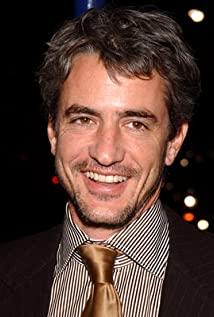Unlike ordinary suspense films, it is self-evident that there will be problems with this "uncle" from the very beginning. With the deepening of the plot, we are no longer looking for the obvious "truth", but as a bystander, watching the changes with a cold eye, worrying about whether the girl will be killed or deceived, until the end of the film is reversed.
As a suspense film, the logic is strict and the details are carefully considered. Narrative level, jump without chaos. On the plot line, the combination of real events and imaginary situations through parallel montage and cross montage is the most worthy of learning and reference for such a rigorous movie script.
At the production and shooting level, the highlight is the application of image metaphors. The whole film often uses close-ups to shoot some independent objects, such as beetles, spiders, shoes, etc.; such as boulders in the courtyard, pianos, belts, and hunting scenes. After careful analysis, the objects that appear each time have the expressive intention of the director, rather than the display of art props.
For example, on her birthday every year, India will receive a pair of flat shoes made by her father. After the uncle confessed the truth, he calmly took out a pair of gorgeous high heels from his travel bag and put them on for India. At this moment, from flat shoes to high heels, from simplicity and innocence to the awakening of the devil in the bottom of my heart, the change of shoes is a symbol of a girl's spiritual transformation.
As for the piano, as the story progresses, the frequency gradually increases. The people who play the piano on the piano bench keep changing and changing. The actual director presents the intricate relationship and psychological entanglement between these three characters in another way. The feud between mother and daughter is revealed through the part of refusing to play the piano after dinner; the details of mother teaching uncle to play the piano, the camera highlights the close-up of the fingers and feet of the two, alluding to the unusual ambiguous relationship between them; What stands out is a scene in India's fantasy, where she is playing the piano when her uncle suddenly appears, accompanied by strongly suggestive words and actions. The ensemble of the two makes the girl reach a spiritual orgasm. Through the bridge, the director has given the girl's psychological analysis to all audiences.
What "Stoker" brings us is the aesthetics of violence, a power that erupts in quiet silence, the sinful thoughts hidden deep in the heart, which can burst out in an instant. What was extremely shocking was that at the end, India raised the shotgun and shot at the uncle who was murdering his mother with a belt. India took up the shotgun, aimed at the mad uncle, and aimed; suddenly the camera switched to the situation where her father once took her lurking in the grass, waiting to ambush the prey. There was no sound, the father did not speak, both of them looked ahead, Indy Ya held her breath and pulled the trigger; the next shot: the window glass was penetrated by bullets, and the holes were radiating. In just a few short shots, it is clean, neat, and the transition from tension to tranquility. Lurking was taught to her by her father since she was a child. They are all perverted.
What I regret the most is that no character in the film is cute or terrifying, and cannot be liked or substituted by the audience, let alone resonated. Maybe everyone has something worthy of sympathy, but it makes people feel that there must be something hateful. As a revenge movie, it is too cold-blooded, lacks warmth, and is full of negative energy.
I don't like this movie, except for the beautiful Nicole Kidman (really beautiful and silly and naive).
View more about Stoker reviews











